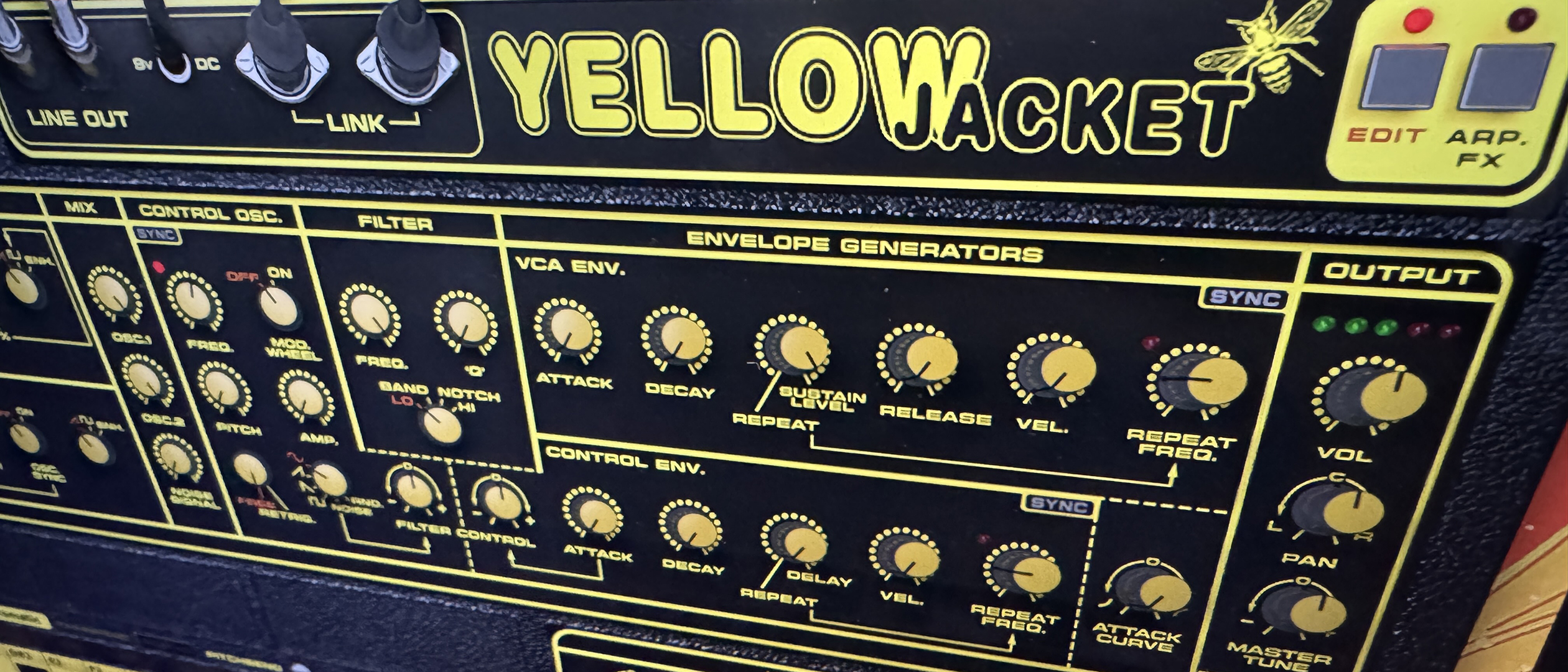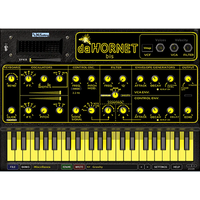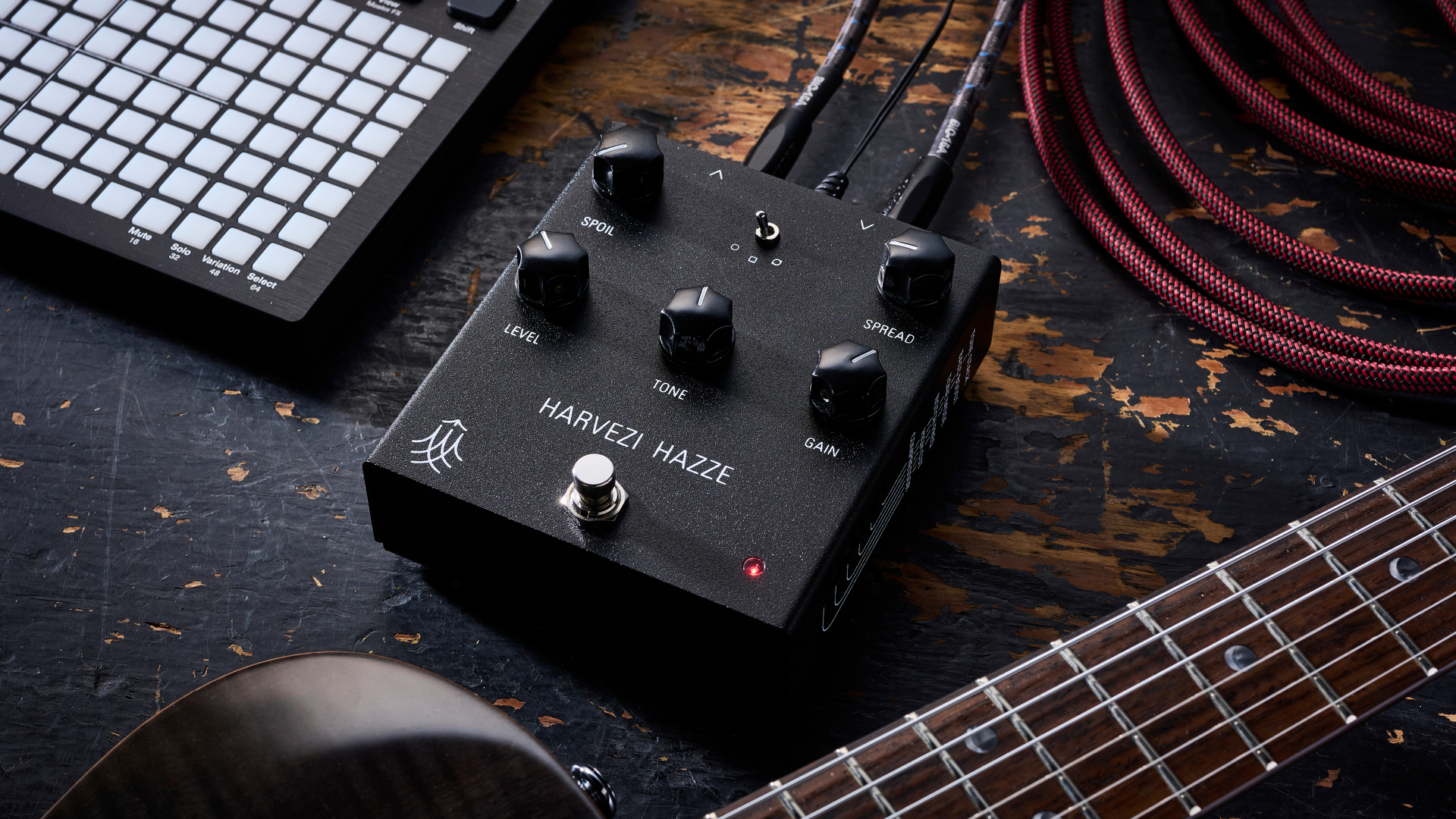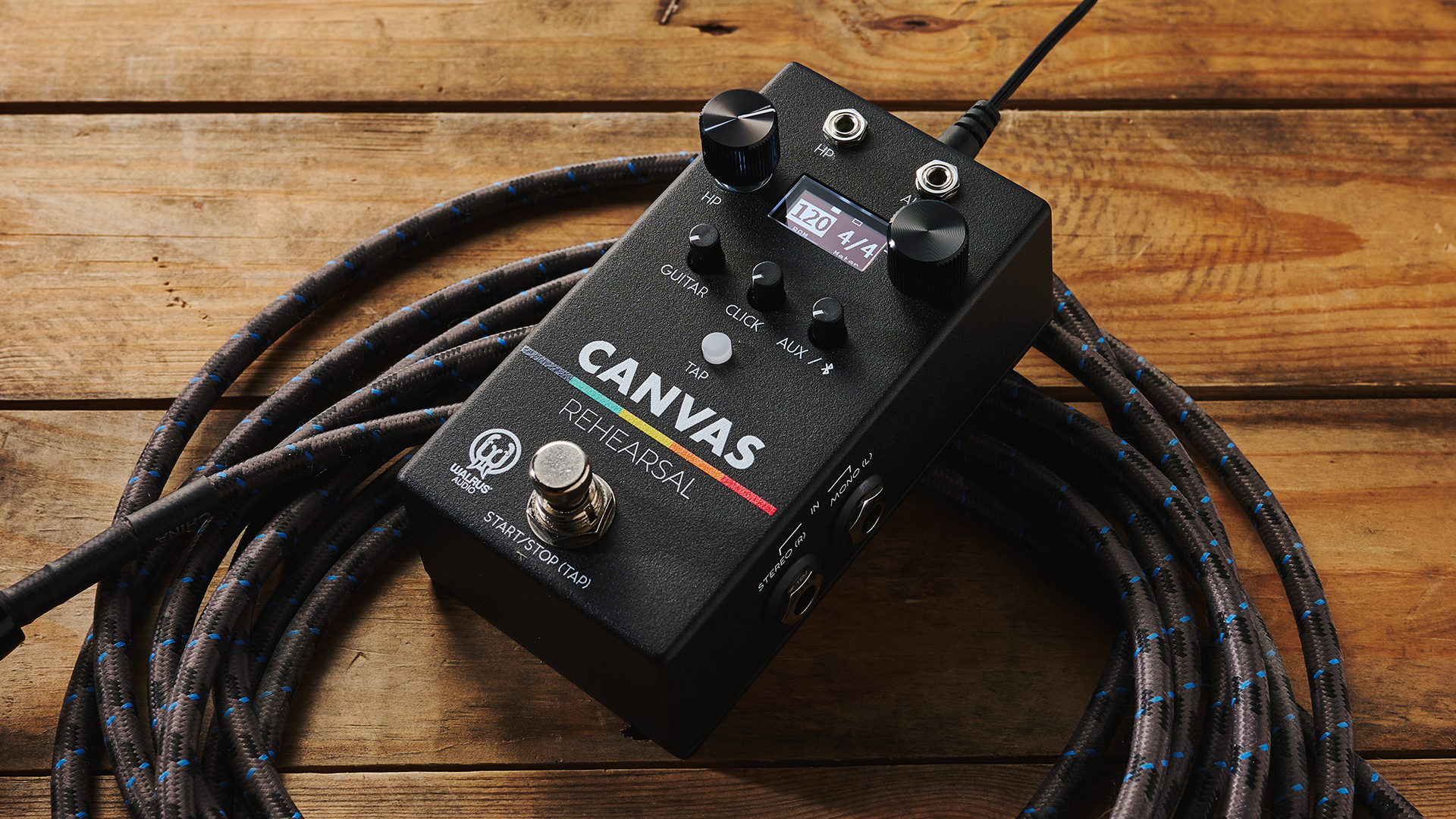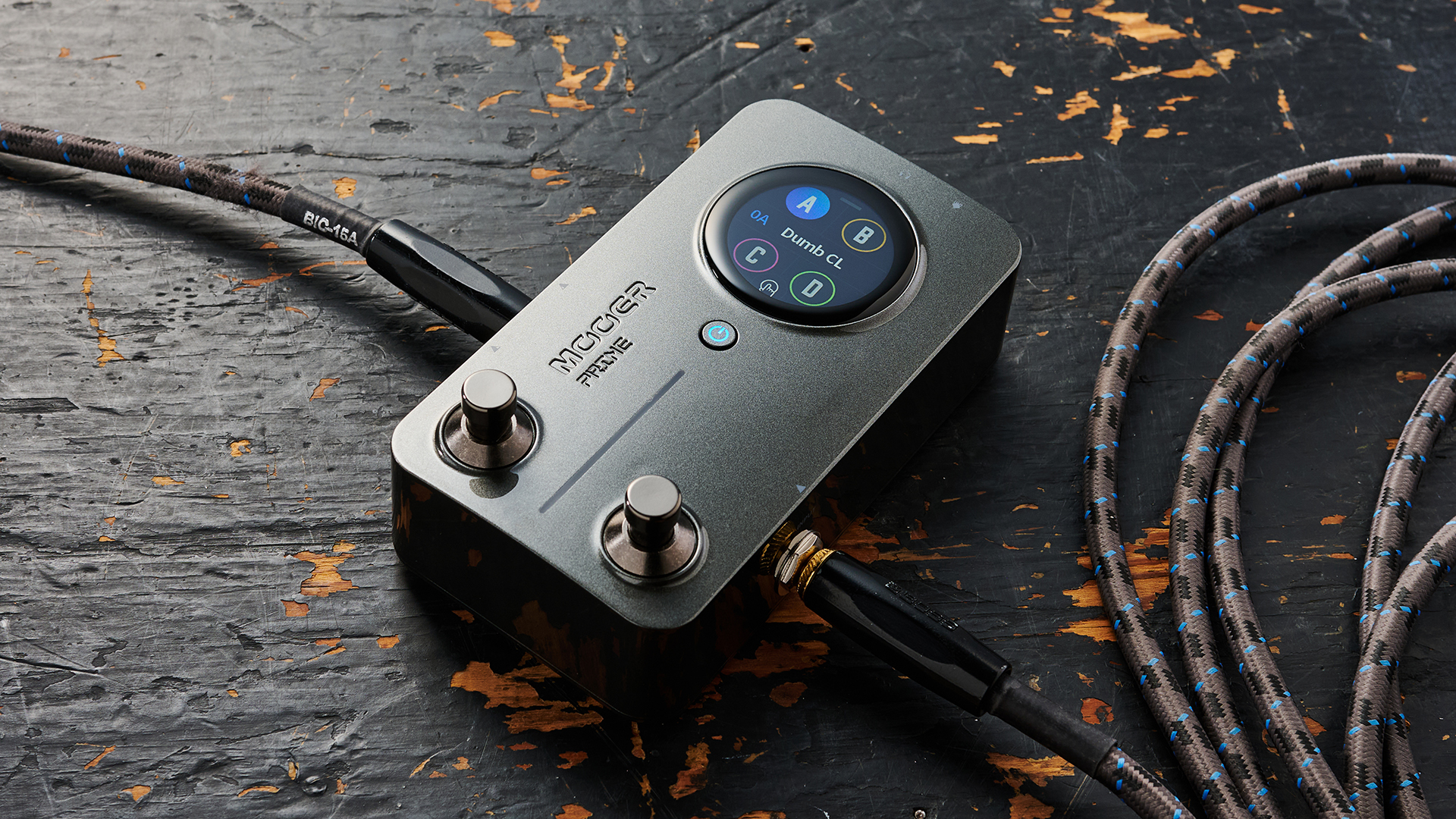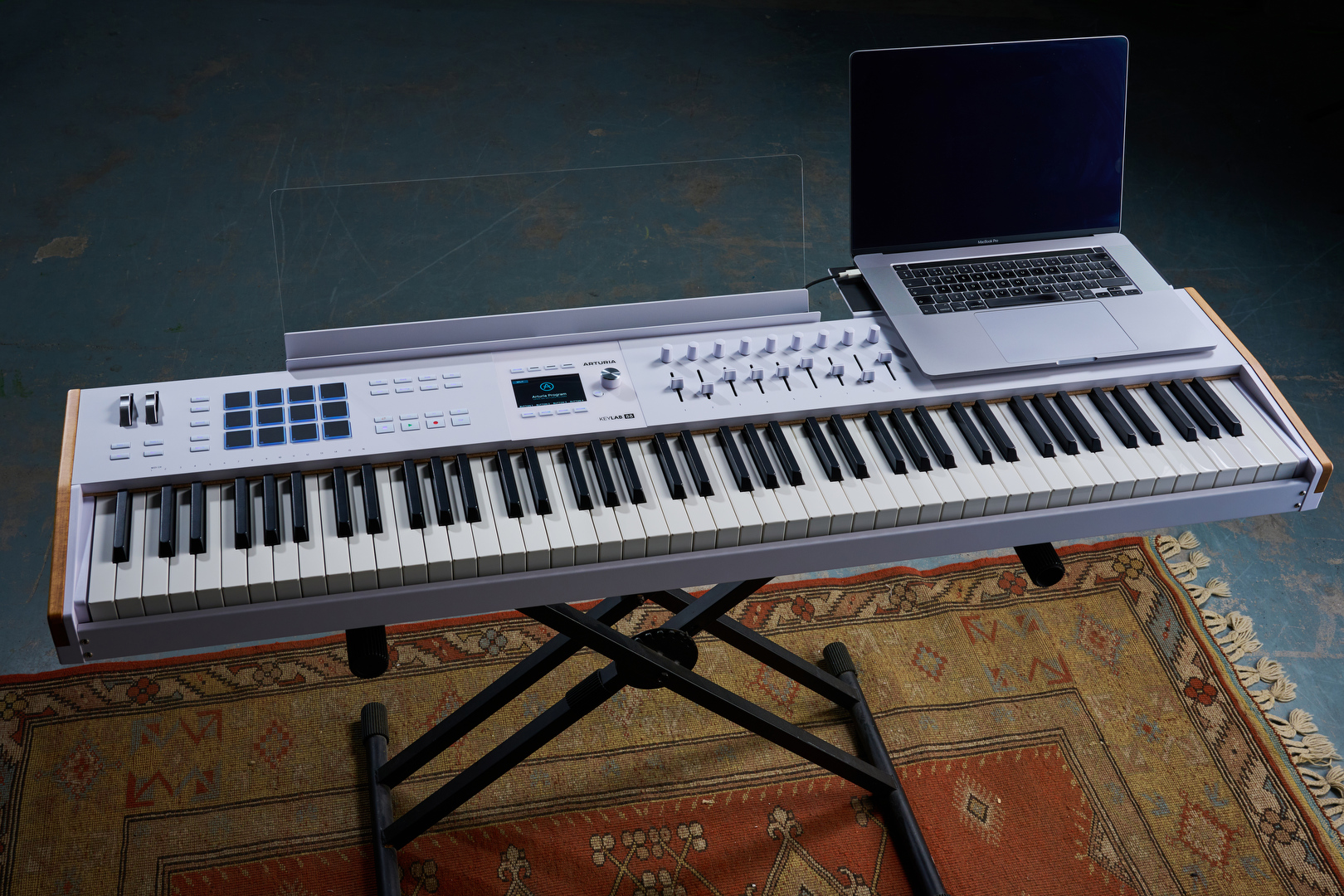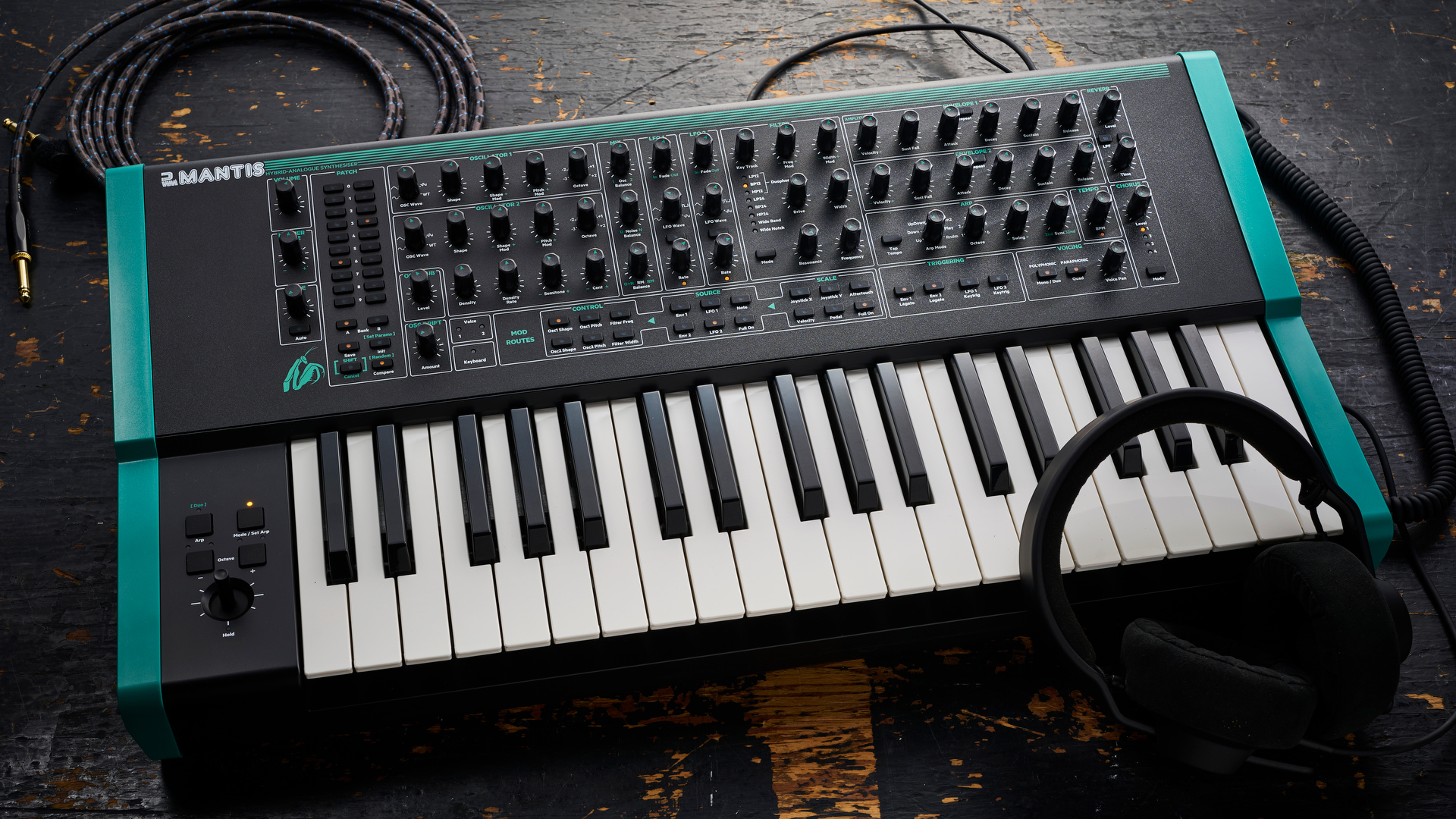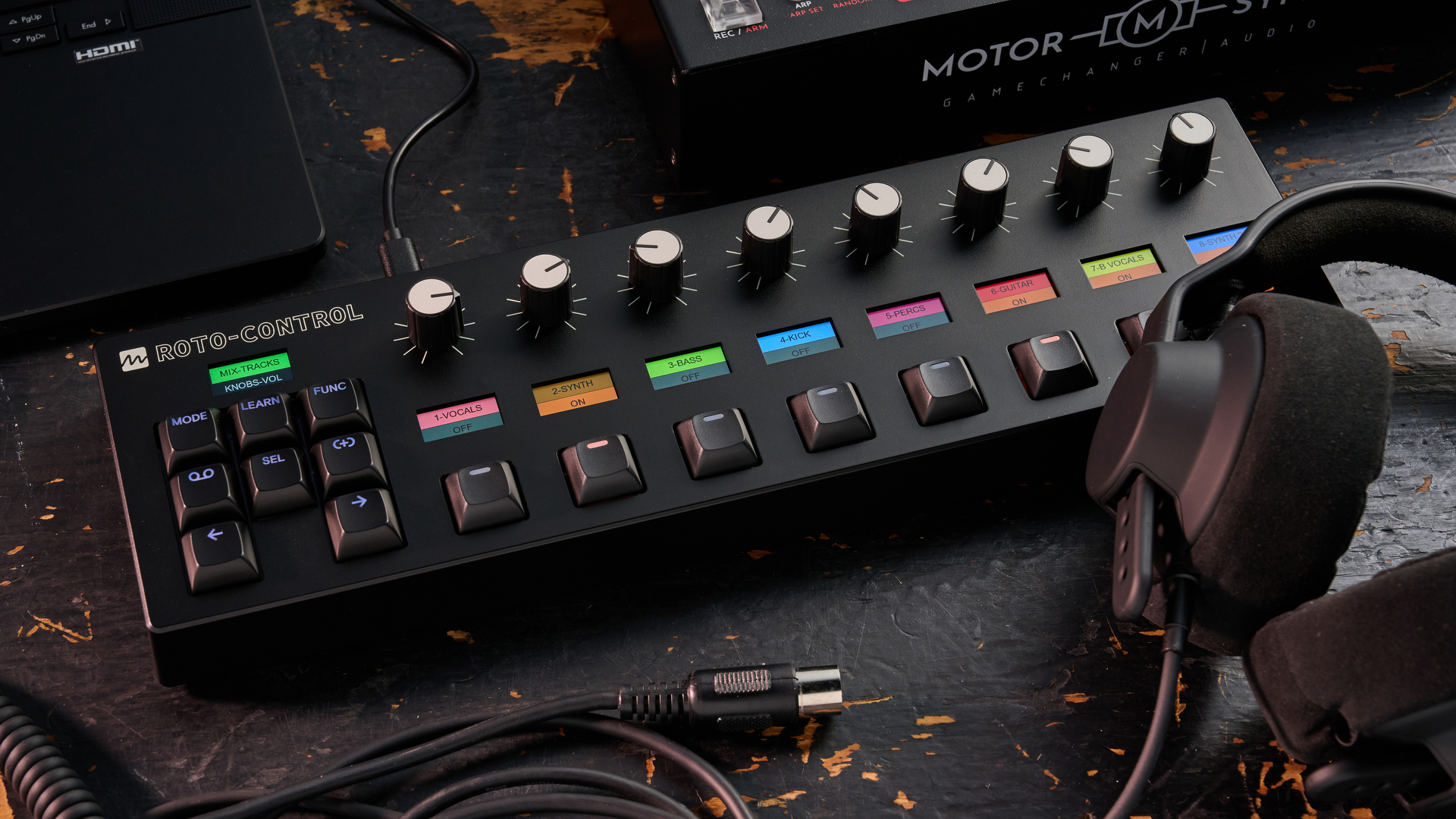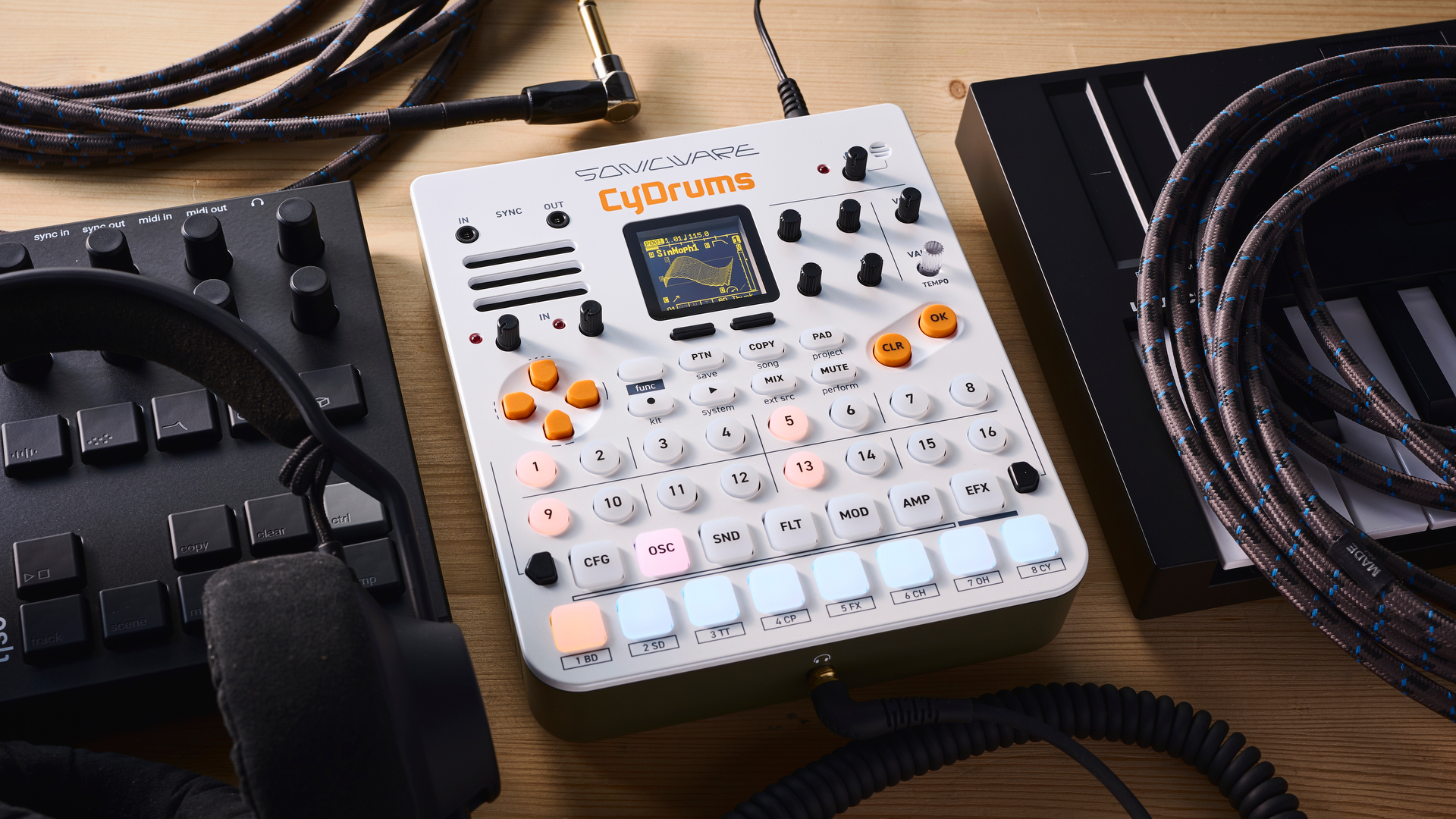MusicRadar Verdict
Cherry Audio continue to explore some of the more unique and characterful devices available from synthesiser history, and this is a great example of a unique sounding synth, which performs brilliantly in so many idioms.
Pros
- +
Faithful and loving recreation of the EDP Wasp
- +
Plenty of quirky operation, outside of the predictable elements
- +
Immediate access to aftertouch control
- +
Loads of great onboard effects
Cons
- -
The on-screen keyboard mimics the original (but thankfully, you don’t have to play it!)
MusicRadar's got your back
What is it?
If there’s one thing that we have come to learn about Cherry Audio, it is that it likes to re-engineer some of the quirkiest and lesser-seen devices, but does so in a way which is both creative and classic.
Its latest project is the Yellowjacket, which is the perfect name (from this American company) for the original British synthesizer known as the Wasp. The original hardware had an extraordinary pedigree, with design input from legendary synth designer Chris Huggett, being recognisable by its garish black and yellow livery.
Made by Electronic Dream Plant, it was designed to be an affordable unit, housed in a medium-weight plastic casing, with an onboard speaker, and the ability to run on either mains or battery power.
Its original price (at just under £200) might explain why so many artists look fondly upon the Wasp, providing an entrée to the world of synthesis. It was reputedly the first synth that both Nick Rhodes and Thomas Dolby got their hands on, although we don’t imagine either used them live. The non-moving keyboard was pretty unplayable, by way of a stuck-on plastic keyboard graphic, with markings that would wear away over time!
Pricing
- Full price: $49
The launch price for Yellowjacket is just $49 and that's not a special introductory offer either.
If you're not entirely keen on getting your hands dirty with some initial sound design and you've exhausted the 200 included presets, then expand our sonic palate even further with the Hive Mind for Yellowjacket Preset Pack ($9.99). This expansion will add 100 more presets, crafted by James Dyson.
Performance
Signal flow
Yellowjacket adopts the same basic infrastructure as the Wasp; there are two great sounding oscillators upfront, which feed into a mixer where noise can also be added. The filter section is flexible, providing cutoff and resonance control for low, high, band and notch-pass filtering. Moreover, the 24db design can sound sweet or aggressive, depending on your use and indeed how you might be feeling on any particular day!
There are two 4-stage envelopes, with the primary generator linked to the VCA. The secondary envelope is routed towards the filter cutoff, with a pot to dictate either positive or negative amounts of modulatory signal. Both of the envelopes provide a repeating/looping function, which can free-wheel or be synchronised to the clock of your DAW. It’s a neat party trick, and one that immediately conjures images of repeating bass lines. While the original Wasp was only monophonic, Yellowjacket provides polyphony up to 16 notes, and with envelope looping activated, allows for some very cool chordal tricks, particularly when used alongside a sustain pedal.
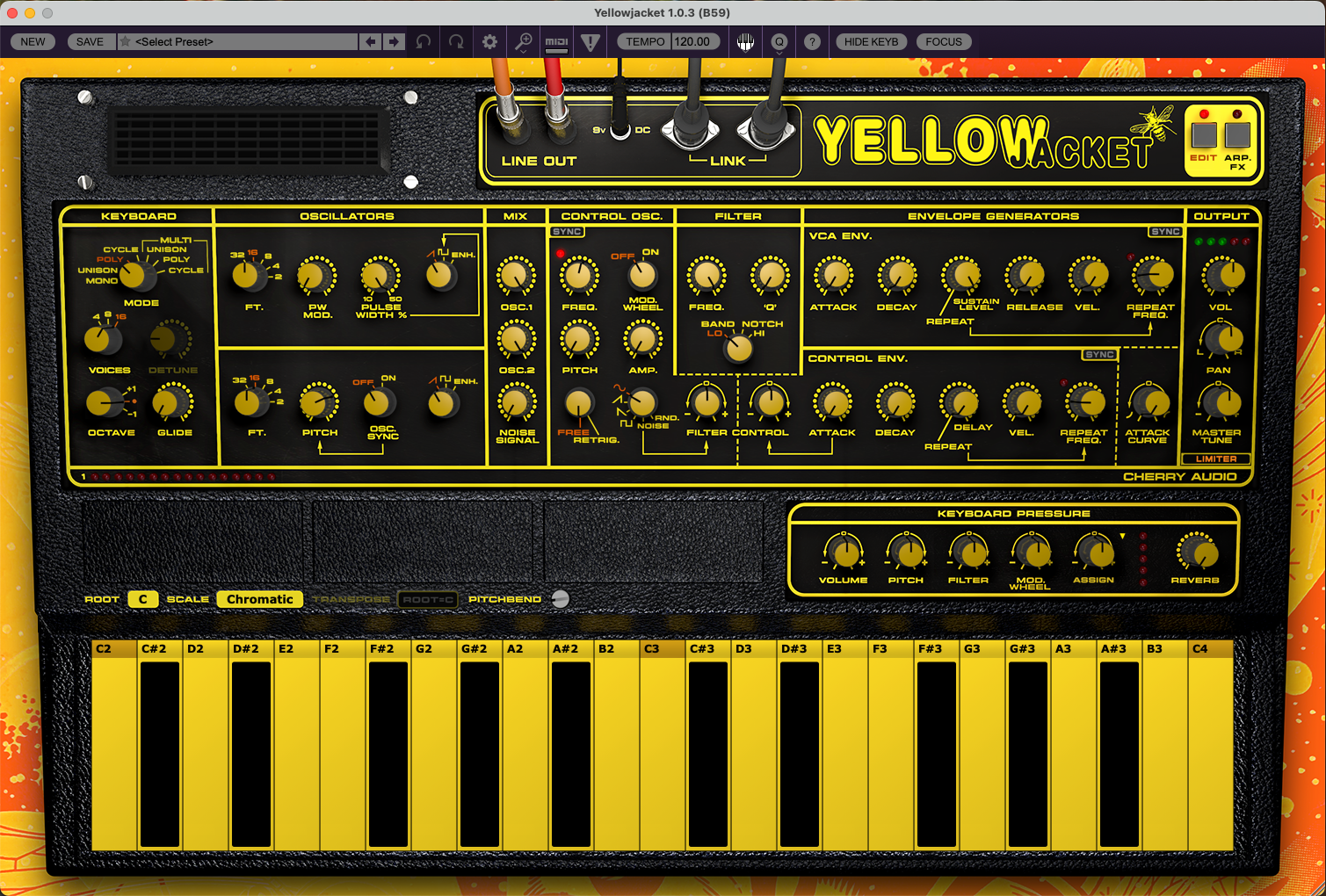
The sonic make-up of the Wasp was always heavily applauded, and this translates beautifully across to Yellowjacket. There is an incredible weight to the sound of the oscillators. There are some subtle differences between oscillators one and two, but they complement each other very well. Both oscillators provide Saw and Square waves, with the latter open to pulse-width modulation, but this is only available through oscillator one.
Fear not, though, because a third wave, described as ‘Enhanced’ is available on both oscillators, and provides a fixed pulse-width modulation, which is a concept that Cherry Audio have borrowed from the EDP Gnat synth, which only offered a single oscillator. The oscillators can also be synced, and adjusted to suit from the five octave ranges available, via the ‘footage’ pot.
There’s a lot going on here, with the combination of the different waves moving seamlessly from weighty bass duties to more ghostly tones, achievable through the use of the Enhanced waveform. Add the filter into the equation, and there is plenty of flexibility to design your tone to suit your own dynamic.
Control Oscillator
At the centre of the panel resides the Control Oscillator, which could be better described as LFO. All the usual control is available, from a syncable rate control, to the four LFO waveforms, with additional random options. These settings are also switchable between permanently on, or via modulation wheel. The control oscillator can then be assigned to modulate pitch, amplitude or filter, and set to freewheel, or re-trigger with each note press.
Another useful feature, which is only available through this software recreation, displays your parameter/pot selection in red. This is very helpful when programming, against the yellow and black background.
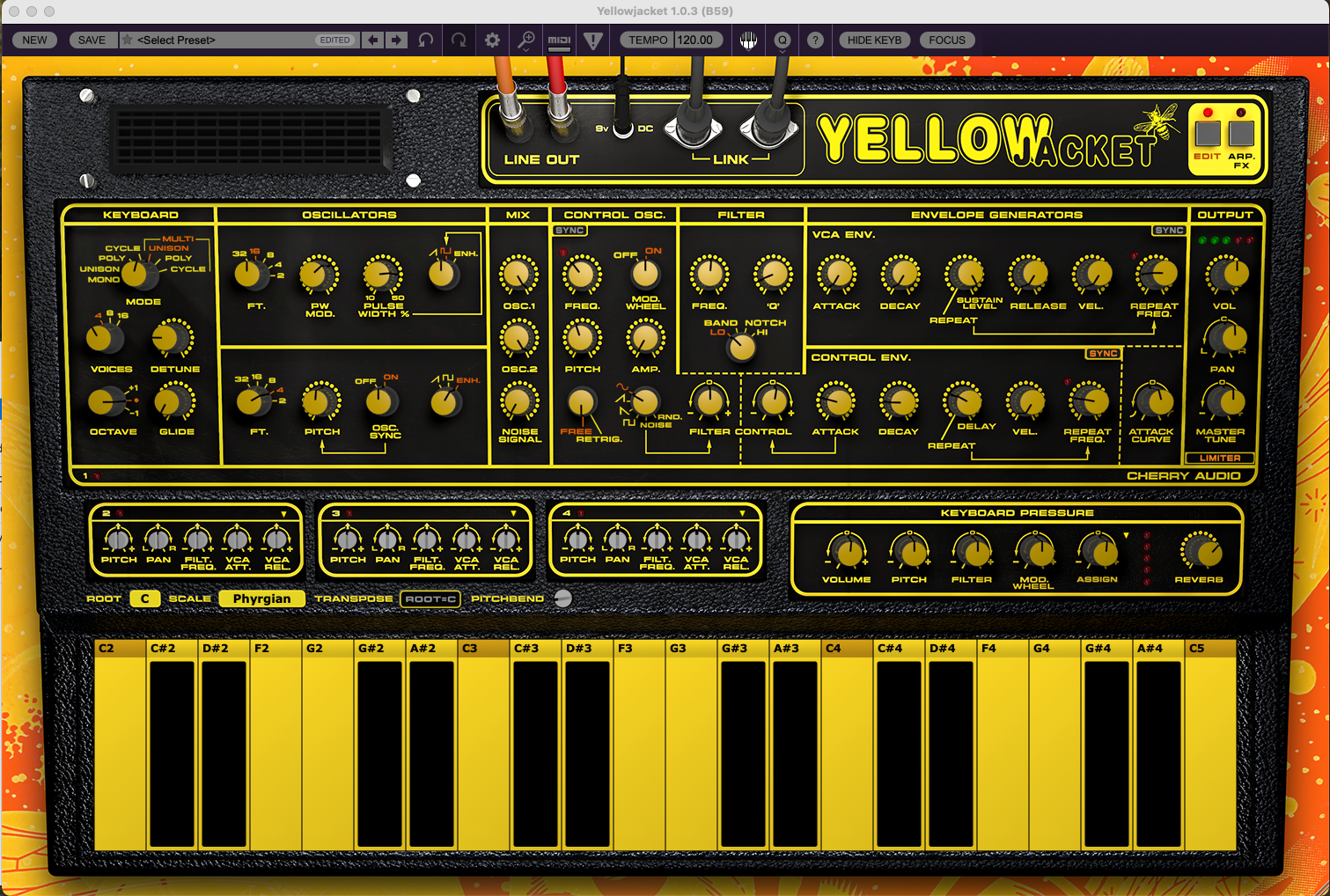
Additional extras
Cherry has equipped Yellowjacket with a considerable number of performance options, starting at the keyboard level. While the original keyboard on the Wasp was a bit of a pain, in software, it can be redesigned to suit your whim. You can re-scale the keyboard on screen, with the option to select different scales or modes, should you decide to click with the mouse on your computer’s screen. This can be fun, but it does not affect the way your music keyboard reacts with the synth.
However, it’s the Keyboard section, located on the top left-hand side of the panel, which provides enormous capacity to change the overall sound of Yellowjacket. As previously mentioned, you can activate up to 16 voices on Yellowjacket, and choose between the more usual mono, poly and unison modes, but you can also activate Multi-mode, which allows you to change settings at the note level. This mimics the EDP Link interface, which allowed up to 4 Wasps to be connected and controlled by the Caterpillar keyboard. In this software setting, it’s a lot less hassle, with a control interface immediately opening just above the keyboard.
There’s potential for a degree of chaos here, with individual adjustments for pitch, pan, filter and VCA attenuation, all at the note level. Through the ability to subtly alter each note’s perception, this provides a humanistic quality, which isn’t random, but can present itself in a similar way.
To the right of these settings, there is immediate access to keyboard pressure/aftertouch settings, which can induce subtle alterations of elements such as volume, pitch and filter, as you play.
Get effected
Cherry Audio has included its usual stylish set of backend effects. You can choose from distortion, phaser, chorus, echo and reverberation, coupled with a limiter on the backend output.
As a cute nod toward the original hardware, they have also included a speaker setting, which mimics the miking of the original on-board speaker, found on the Wasp. This could be regarded as a somewhat Marmite inclusion, coupled with the ability to increase hiss and hum, at either 50 or 60 Hz, according to your particular persuasion!
The Arpeggiator is also incredibly good fun, and flexible too, with the ability to hold, allowing you time to play with the settings, which include chance and humanise.
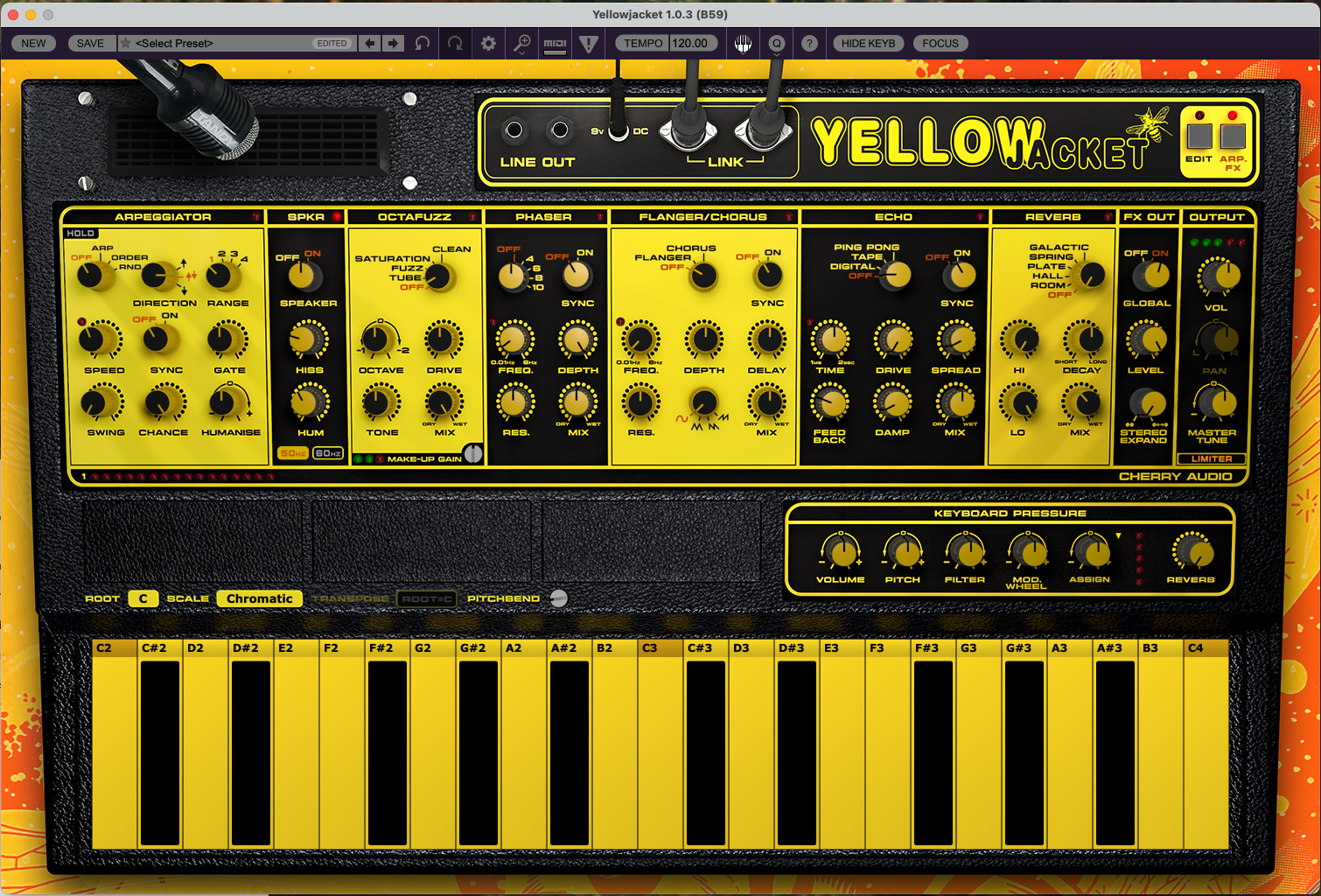
Verdict
The Yellowjacket is a classy performer, with a sound which has an edge, making it perfect for contemporary production, while being a curio for anyone who remembers these from their younger years.
Cherry has included all of its usual bells and whistles, such as the standalone version (which you can get lost in for hours), the focus mode, resizable GUI and a large number of curated patches, which show off the plugin to a great extent. However, it’s so easy to get started and create your own patches, it’s difficult to understand why anyone wouldn’t want to get their hands dirty.
Hands-on demos
Cherry Audio
Specifications
Key features | Monophonic, unison, polyphonic (4, 8, or 16 voices) modes Two oscillators with ramp, pulse, square wave, and an enhanced modulated pulse-wave based on the EDP Gnat Oscillator sync Syncable control oscillator (LFO) with free and retrigger modes, and sine, ramp, sawtooth, square, noise, or random waveforms for pitch, filter, and amp modulation Vintage-correct two-pole 12dB state-variable filter based upon the CD4069 logic chip of the original, with lowpass, bandpass, or highpass, with an extra notch mode, and the "Q" resonance setting Two envelope generators: a VCA Envelope for volume control with a repeat function, and a Control Envelope that modulates filter cutoff frequency with positive and negative modulation, as well as looping and adjustable attack settings |
System specs | MacOS and PC Windows; AU, AAX, VST, VST3 & Standalone formats |
Contact |
Alternatives
This latest edition of the NUSofting's daHornet comes with a slew of improvements over the previous versions, with anti-aliasing oscillators, new FX and a scalable UI, are some of the highlights.
Roland Schmidt is a professional programmer, sound designer and producer, who has worked in collaboration with a number of successful production teams over the last 25 years. He can also be found delivering regular and key-note lectures on the use of hardware/software synthesisers and production, at various higher educational institutions throughout the UK
You must confirm your public display name before commenting
Please logout and then login again, you will then be prompted to enter your display name.
“A genuinely fun take on the classic distortion-slash-fuzz pedal”: Soma Laboratory Harvezi Hazze
IK Multimedia’s ARC Studio is a game-changing out-of-the-box acoustic room correction system that’s like an instant upgrade for your monitors - without the hassle of software-based solutions
“Do something with it. Mangle it. You have to be ruthlessly objective": Trevor Horn on his sampling and drum machine production mindset
